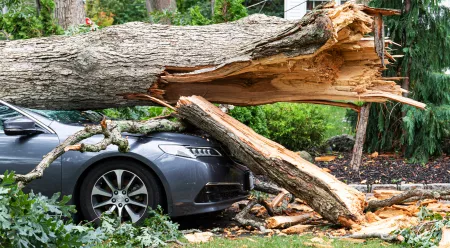The day that no homeowner wants to see is when they have to file home insurance claims. No one wants their property to get destroyed even when it’s covered; it is heartbreaking. However, nobody can stop the inevitable. But the good thing is that Canada has a high home insurance satisfaction rating. So if you know how to file a home insurance claim the right way, you can get reimbursed quickly.
This, combined with the fact that you purchased a solid home insurance policy in the first place, will only increase your chances of getting full reimbursement for the damages. So without further ado, let’s discuss the home insurance claim process in detail below.
How to File a Home Insurance Claim in Canada– Complete Process:
The home insurance claim process involves several steps, which can be more or less depending on your situation, but we’ll break it down into seven steps. And anyone can easily understand them as long as you read them thoroughly. That said, let’s start:
1. Filing Police Report:
This is not necessarily the first step, as the damage can be due to natural causes as well. However, if your property was burglarized or if the theft was committed; you’ll then have to file a police report. This report is necessary and will be asked for when you file home insurance claims.
2. Contacting Insurance Company:
Next, call your insurance service provider and inform them about the incident. Their claims professional will get in touch with you and discuss the nature of the loss, if your policy covers it, and tell you the home insurance claim time limit.
If the loss is not very significant or not spread around the property, you might even get a ballpark estimate of the amount you’re going to receive minus the deductible. A deductible is an initial amount you pay from the pocket before the insurance provider compensates you.
Other things that the claim professional might tell you can include claim processing duration and whether you should get a repair estimate for the damages or not. It might be useful also to check this post about home fire and insurance coverage.
3. Filling Forms for Homeowners Insurance Claims:
Your insurance company will send you ‘claim documents’ via their online portal if they have one, or it can also be sent through the mail. One of those documents will be the proof-of-loss form, which will collect things like your personal information, part of your property on which you’re claiming a loss, the cause for the damage, and an estimated amount for it.
You can also submit video/photo evidence(s) of the damage when sending claim forms. We suggest you do not delay filing the claim documents and send them back as soon as possible to stay within the home insurance claim time limit.
Tip: Try to gather as many receipts/invoices of the damaged items as possible and send their copies with the claim documents. These receipts will confirm the value of your damaged/stolen items, which will significantly increase the chances of getting full reimbursement.
4. Get Temporary Repairs Done:
If the house has been damaged, conduct a thorough check and ensure there are no openings, cracks, or other damages that can increase with time. You do not want to add additional damages to your claims that occurred after the initial ones, as it can be quite challenging to get reimbursements for them.
So if you see any problems that can further destroy the property, get them fixed ASAP and keep their receipts with you; you can get funded for them later on by the insurer.
5. Prepare for the Claim Specialist:
This one is the most critical part of the home insurance claim process because an insurance adjustor/claim specialist will visit your property for inspection. She/he will assess the extent of damage and confirm a few details that you forwarded with your claims documents, such as:
· Confirming the cause behind property damage that’s covered under your policy
· A thorough inspection of the property’s structure
· If there’s also a liability claim, the adjuster will ask for contact details of concerned professionals like lawyers or doctors
· You will have to provide the photos, videos, list of home inventory, and receipts of the damaged items
· Lastly, he/she will conduct a detailed interview with the policyholder
6. Obtain the Estimates:
Depending on the extent of property damage, you will have to get estimates from local appraisers, contractors, plumbers, electricians, or roofing companies.
That'll add a bit of understanding in case your insurance company offers a lower settlement amount because you’ll already have precise estimates from third parties.
7. Receiving the Payout:
Finally; it’s payout time! If the home insurance claims you made check out and the adjuster agrees to the settlement amount, you’ll get the insurance payout. If your home has a mortgage, your insurance company will send out two checks – one to you and the other to the lender listed on your homeowners’ insurance policy.
This is necessary because if the property’s structure has sustained damages, it’s the lender’s right to get the check and ensure that essential repairs are being done to the property. The mortgage company usually puts insurance funds into an escrow account and gradually releases them as the repairs are made.
Furthermore, if your personal property is insured at the replacement cost, then you’ll receive the check for the actual value of the property minus the depreciation. And once you decide to replace it, you’ll be paid the remaining amount too.
Parting Words:
It can be pretty daunting to file homeowners insurance claims at first, but things can be very straightforward if you know precisely how. Use the seven steps mentioned above as the guiding light, and you should be fine.
A quick word of advice; act as quickly as possible once the damage occurs because you do not want to go past the home insurance claim time limit. Moreover, repair any damages that can further destroy the property from your pocket as fast as you can; you’ll likely get reimbursed for them later. It might be helpful to check this post about average home insurance costs in Ontario as well.



